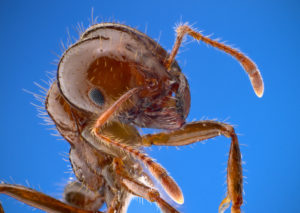
Ants are the most frequent pests which can be seen easily around homes and buildings. There are different species of ants and each species carry different characteristics. There are many householders who are not aware of all these species and find all the species to be the same. Ants have the attraction for electricity due to which they construct a colony, especially where electrical wires come the chances of short circuit is more as the wire can ignite and can cause huge damage. The super ants have an attraction for the electrical current. Their attraction to the electricity is extremely strong and they may eventually result in death.
The super ants are also known as fire ants as they are attracted to electrical wires and cables, sockets etc. and they cause a fire. The super ants are small but builts huge colonies which are spreading over miles as the ants appeared to be spreading at a faster rate. The super ants were first identified in Hungry in the year 1990 and were found in the UK in the year 2009.
Let’s have a look at some of the evidence,
Fire-starting ‘super ant’ that is drawn to electrics is spreading across the UK, experts warn
By Cristina Criddle
An Asian super-ant that forms colonies of millions and can cause fires due to its fatal attraction to electricity is spreading across the country, experts warn.
The species, Lasius neglectus, thrives in gardens and greenhouses and has invaded homes from Yorkshire to Sussex.
The super ants – also known as ‘the fire ant’ because it is attracted to power sockets and cables, sparking blackouts and fires – was first identified in Britain in 2009 at a National Trust manor in Gloucestershire, where more than 35,000 were found.
The insect looks the same as a common black garden ant but the number of workers in a colony is between 10 and 100 times greater. It is native to Turkey but has been a growing problem across Europe, living interconnected nests that can span 50 acres.
Last spotted in 2014 in London and Cambridgeshire, there have been three reported infestations this year, one in North Yorkshire and two near Eastbourne.
In response, the Department for Environment, Food and Rural Affairs commissioned a report into the ant’s potential spread, with options for control and eradication.
The University of York, who worked on the risk assessment for the Government, estimated the super ants cost the UK £1.7billion every year through damage and management costs.
Super ants with a deadly attraction to electricity escape from Gloucestershire and head for London
An invasion of “super ants” with an attraction to electricity so strong it may eventually result in their own death is feared to have spread across the south of England after a large nest was found in London.
Known as fire ants, or Asian super ants, the insects were first spotted in the UK in 2009 at Hidcote Manor – a National Trust property in Gloucestershire – where more than 35,000 were discovered.
Unlike normal ants, the Lasius neglectus super ants form huge colonies which can interconnect over many miles.
Now it is believed this colony of ants is on the move after a colony was found to have invaded a house in Hendon, north-west London, almost 100 miles from Hidcote, while more have been discovered in Buckinghamshire.
The super ant’s attraction towards electricity is stronger than its compulsion to eat or drink, meaning it can gnaw through electricity cables and nest in electrical equipment and plug sockets. These ants usually nest in electrical items and this means they can pose a fire risk and when they swarm can cause blackouts.
Conventional insecticides have proven to be a failed solution to give effective results. These insecticides are toxic in nature. They kill target as well as nontarget species. They are also hazardous to human health. Moreover, species like super ants are not at all affected by the toxic effects of these insecticides.
C Tech Corporation offers extremely low in toxicity and low hazard product, Combirepel™ to protect the electrical application and cables from these ravenous insects.
It is an environmentally safe product that works by repelling the insects without causing any harm to the target or non-target species.Combirepel™ is available in form of a solid masterbatch which can be safely incorporated into the PVC insulation of wires and cables while manufacturing or coated on surfaces to keep crazy ants away from the application.
Combirepel™is available in the form of liquid concentrate and lacquer which can be easily blended with paints and organic solvents and can be applied to already installed wires and cables, sockets, electric board etc.
Our newly developed product in the form of a spray can be applied to already installed wires and cables, it is compatible with all types of surface and can be sprayed by anyone
Contact us at technical.marketing@ctechcorporation.com to keep the pests away.

 Are bees endangered because of the use of pesticides which are used on many crops?
Are bees endangered because of the use of pesticides which are used on many crops?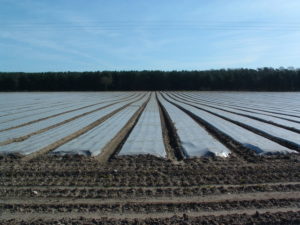
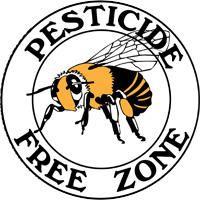 Contact us at
Contact us at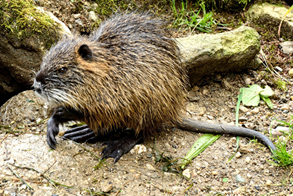 They are back!
They are back!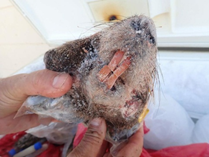 Wearing chest-high waders, biologist Sean McCain tries to tiptoe to the edge of a marsh in California’s Central Valley. A biologist with the state Department of Fish and Wildlife, McCain squints as he searches the shoreline.
Wearing chest-high waders, biologist Sean McCain tries to tiptoe to the edge of a marsh in California’s Central Valley. A biologist with the state Department of Fish and Wildlife, McCain squints as he searches the shoreline.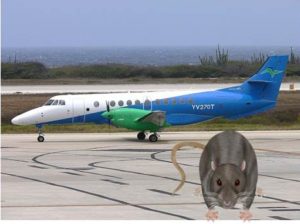 Aviation is one of the most ‘global’ industries: connecting people, cultures and businesses across continents. Aviation has continued to expand. Aviation provides a rapid worldwide transportation network, which makes it essential for global business.
Aviation is one of the most ‘global’ industries: connecting people, cultures and businesses across continents. Aviation has continued to expand. Aviation provides a rapid worldwide transportation network, which makes it essential for global business. Olaf Scholz actually wanted to return home quickly from the IMF meeting in Bali – just in time for the Bavarian election. But the Vice Chancellor’s jet was not ready to go. The reason: damage caused by hungry rodents.
Olaf Scholz actually wanted to return home quickly from the IMF meeting in Bali – just in time for the Bavarian election. But the Vice Chancellor’s jet was not ready to go. The reason: damage caused by hungry rodents.